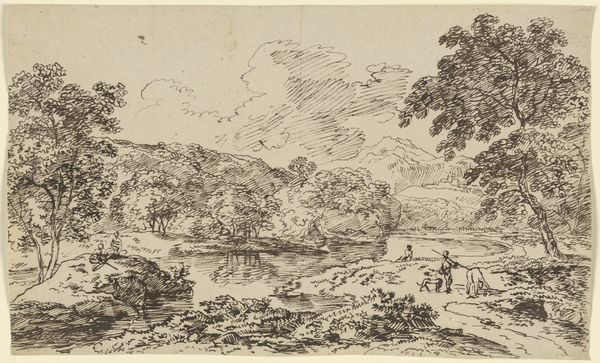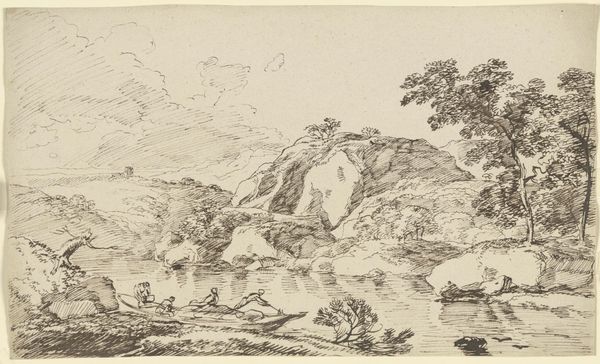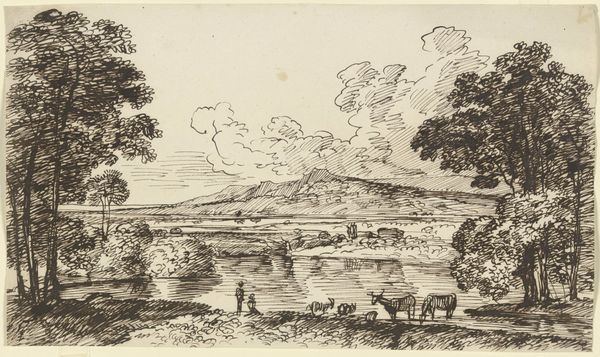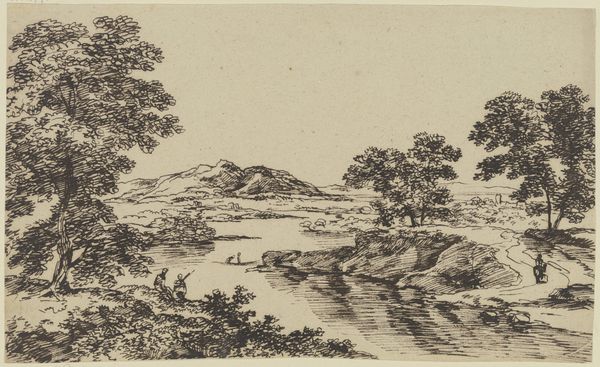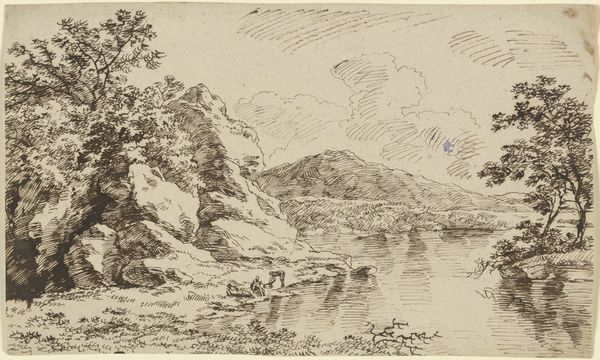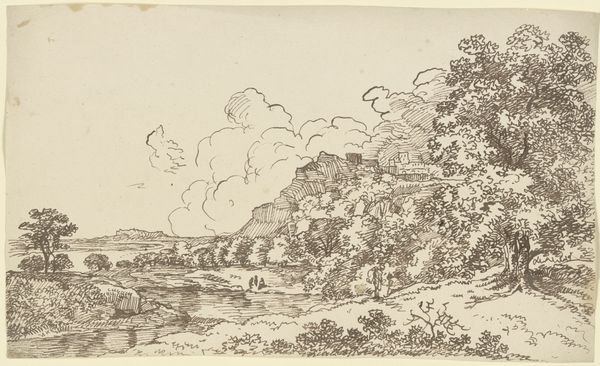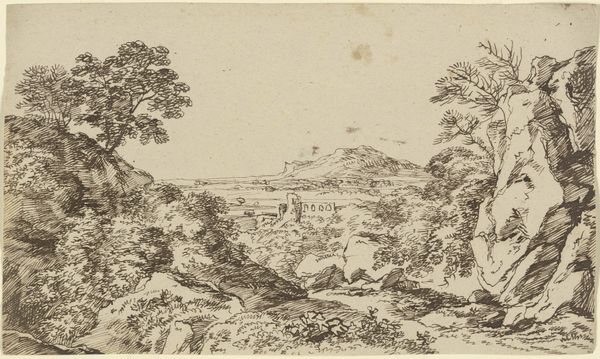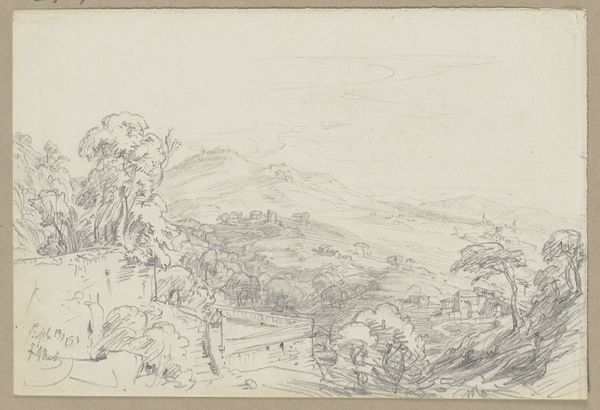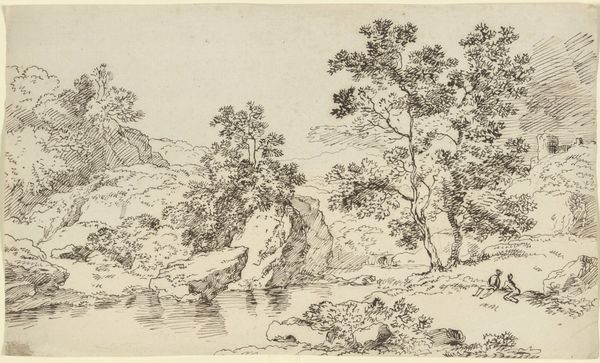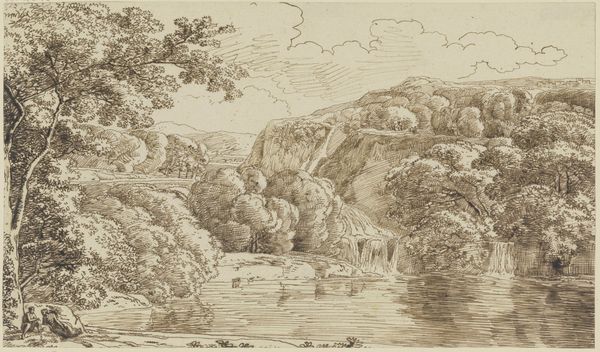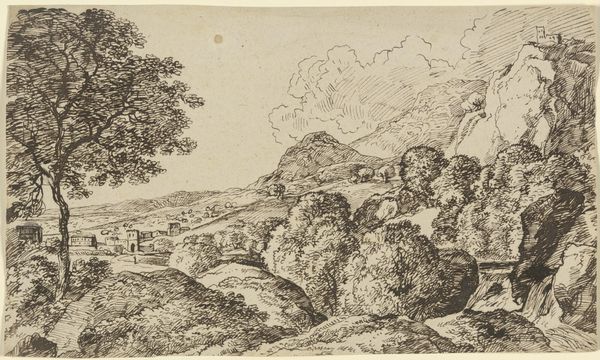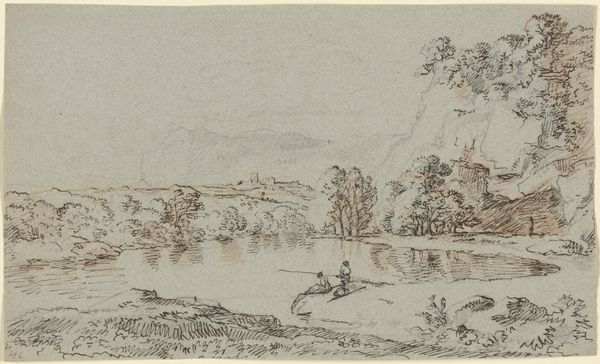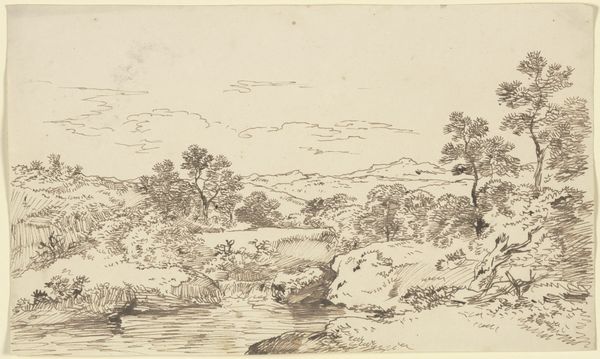
drawing, ink, pencil
#
drawing
#
pen drawing
#
landscape
#
personal sketchbook
#
ink
#
romanticism
#
pencil
Copyright: Public Domain
Editor: Here we have Franz Kobell's ink and pencil drawing, "Burganlage an einem Gewässer", date unknown. The scene is so intricate, almost dreamlike with the castle nestled amongst rolling hills and reflective waters. How do you interpret this landscape drawing? Curator: This piece invites us to consider the evolving relationship between humanity and nature, particularly through the lens of power. Notice the "Burganlage," a fortified complex, integrated—almost camouflaged—within the natural landscape. Kobell presents the seat of authority not as dominating the environment, but emerging from within it. Consider the socio-political context. Editor: The romanticism tag makes sense. There's this idealized harmony between nature and human structures. Is he critiquing power, or celebrating it? Curator: Perhaps both? The Romantic era wasn't naive about power. It recognized its seductive and destructive potential. The delicate ink work contrasts the brute nature of the fortress, does it not? Think of how class divisions or perhaps wars were perceived, viewed or masked. Is the artist suggesting power must be beautiful to be sustained or at least bearable? Where does this "beauty" leave us in discussions about the less desirable sides of a structure of power? Editor: It makes you question whether we're seeing a harmonious existence, or a subtle commentary on the aestheticization of control. The landscape is beautiful, but the fortress looms. I wonder what the local populace who lived here thought about that... Curator: Exactly! We must acknowledge how landscapes, even seemingly benign ones, carry complex socio-political meanings, impacting different identities and experiences in drastically different ways. This helps broaden our perspective on art. Editor: This piece made me think of idealized spaces as both sources of comfort and symbols of sometimes obscured, power dynamics. Curator: And hopefully invites further reflection. The dialogue between art and lived experience never ends.
Comments
No comments
Be the first to comment and join the conversation on the ultimate creative platform.
